Customer Service Knowledge Management What You Need to Know
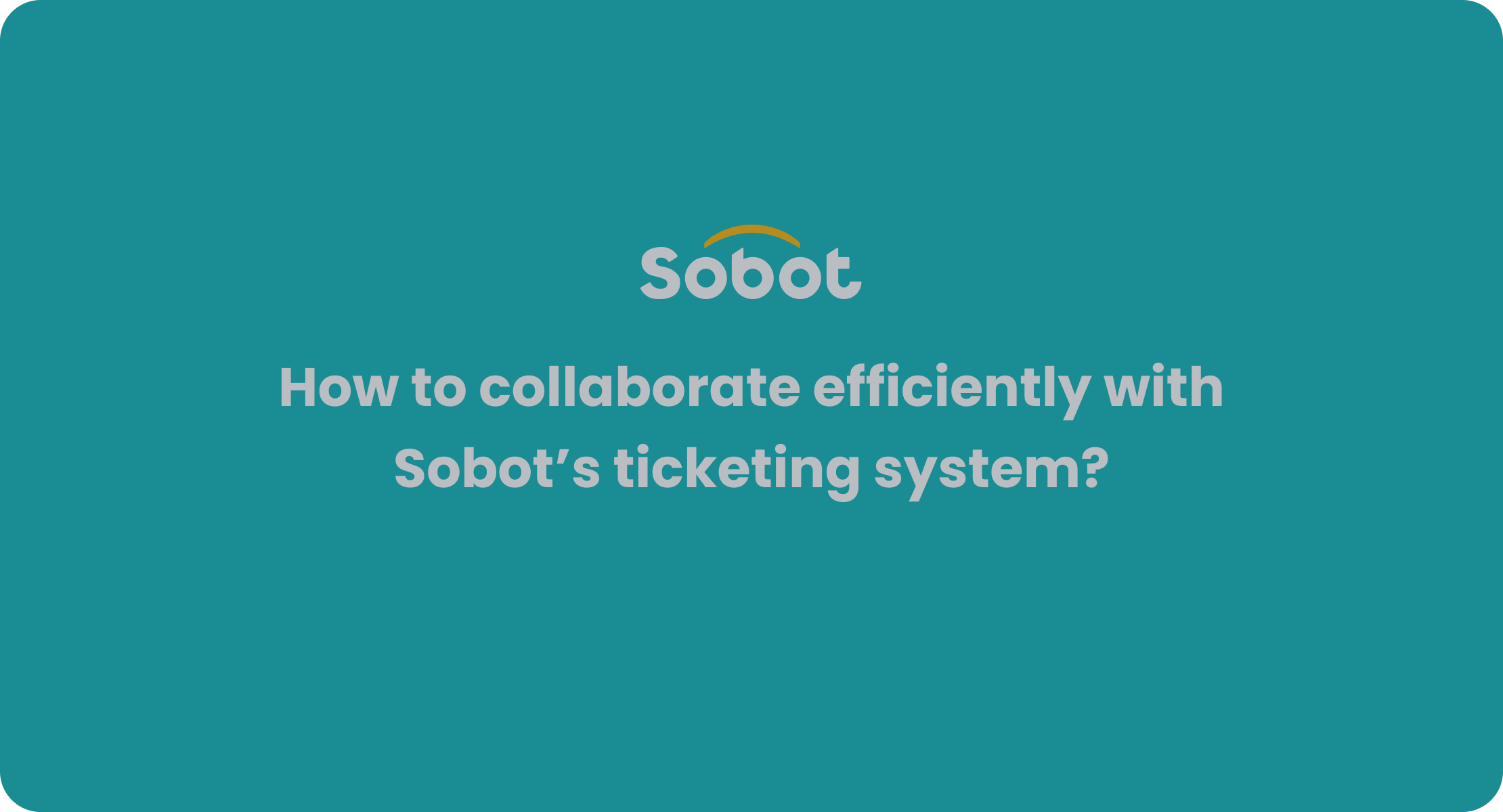
Customer service knowledge management is essential for organizing and sharing information, enabling your team to respond to customer inquiries quickly and effectively. By leveraging strong knowledge management systems, you enhance both customer experience and business outcomes. Sobot provides reliable solutions such as the Sobot Ticketing System and Sobot AI, which integrate customer service channels and optimize support processes. Additionally, the Sobot call center offers advanced features to further improve service efficiency. The benefits are clear:
- 70% of customers prefer self-service options for faster assistance.
- A powerful system can increase productivity by up to 25%.
- 57% of support calls come from customers who couldn’t find answers online.
Discover practical strategies to strengthen your customer service with Sobot’s innovative tools.
What Is Customer Service Knowledge Management
Core Concepts
Customer service knowledge management helps you organize, store, and share information that your team needs to support customers. You use it to make sure agents and associates can find answers quickly before, during, and after a sale. This system gives your team access to a knowledge base, which includes company policies, product details, troubleshooting guides, and frequently asked questions.
Industry experts define customer service knowledge management as a process that lets you use technology and human expertise together. You build a cross-functional team with strategists, subject matter experts, knowledge authors, project managers, and select users. This team works to create deep knowledge, break down silos, and ensure everyone gives consistent answers. You maximize findability by offering multiple search options and encourage crowdsourcing while maintaining quality control.
Tip: When you focus on knowledge depth and consistency, you help your team deliver better customer service every time.
You use modern knowledge management tools that store answers and guide agents with AI-powered suggestions. These tools support multiple search methods, making it easier for your team to find what they need. You also integrate technology like AI, machine learning, omnichannel content management, and analytics with domain expertise and best practices. This approach helps you improve both customer and agent experiences.
You need to quantify the return on investment (ROI) for your knowledge management system. You align your goals with business outcomes and continuously improve your knowledge base. You also leverage social knowledge and integrate it with trusted enterprise content. This strategy helps you build a shared understanding and common language around work, which is vital for customer service excellence.
Key Elements
You need several essential elements to build an effective customer service knowledge management system. These elements work together to help your team resolve issues quickly, reduce churn, and improve customer loyalty.
| Essential Elements for Effective Customer Service KMS | Description |
|---|---|
| Centralized Knowledge Base | Contains company policies, product manuals, troubleshooting guides, FAQs for quick and consistent support |
| Knowledge Management Processes | Capture, storage, sharing, and application of knowledge including tacit knowledge from staff |
| Digital and Omni-channel Tools | Use of chatbots, social media, AI-powered NLP to enhance accessibility and consistency across channels |
| Knowledge-sharing Culture | Encourages continuous sharing and collaboration among employees |
| Continuous Measurement and Improvement | Regular evaluation to maintain relevance and user engagement |
| User-friendly and Secure System | Technologically agnostic, enabling self-service and protecting intellectual capital |
| Structured and Digitized Knowledge | Facilitates better decision-making and faster response times |
A centralized knowledge management approach helps you keep all important information in one place. You make sure your team can access the knowledge base easily, whether they work in retail, financial services, or any other industry. You use digital tools like chatbots and AI-powered natural language processing to provide consistent answers across all channels.
You encourage a knowledge-sharing culture by motivating employees to share what they know. You measure and improve your system regularly to keep it relevant and engaging. You also make sure your system is user-friendly and secure, protecting your company’s intellectual capital. Structured and digitized knowledge helps your team make better decisions and respond faster to customer needs.
Note: When you invest in effective knowledge management, you reduce the cost of not using your team’s expertise. You make knowledge accessible through modern technology, combining people and tools for the best results.
You need people who create and share knowledge, processes that ensure knowledge is available when needed, content like documentation and FAQs, and a strategy that covers budgeting, tools, and ROI. You combine technology to capture and share structured knowledge with human expertise and experience. This hybrid approach lets you expand shared understanding and build a common language for customer service.
Industry Standards
You measure customer service knowledge management using industry standards and metrics. These standards help you track performance and improve your knowledge management system over time. Metrics vary depending on your audience and organizational context.
In support desks, you look at metrics like average speed to answer and first contact resolution. These metrics become more important as your knowledge base matures. In professional services, you might measure startup time for new engagements. Other metrics include customer satisfaction, self-service loyalty, and search effectiveness, such as searches with no results.
| Metric Name | Description | Measurement Methodology | Importance/Benchmarking Use |
|---|---|---|---|
| First Call Resolution (FCR) | Measures the percentage of customer issues resolved on the first contact without follow-up. | Call data analysis tracking resolution on first call. | Considered the most important metric; correlates 1:1 with Customer Satisfaction (Csat). |
| Customer Satisfaction Score (Csat) | Measures customer satisfaction with service interactions. | Customer feedback surveys post-interaction. | Used to benchmark customer experience and service quality. |
| Customer Service QA | Quality assurance evaluations of customer service interactions. | Quality monitoring and scoring of calls or contacts. | Helps identify strengths and areas for improvement in service delivery. |
| Call Escalation | Tracks the frequency of calls escalated to higher support levels. | Call center operational data. | Indicates complexity or issues unresolved at first level. |
| Average Handle Time (AHT) | Measures the average duration of customer calls from start to end. | Call timing systems. | Efficiency metric; must be balanced with quality metrics like FCR and Csat. |
| Abandon Rate | Percentage of calls abandoned by customers before being answered. | Call center telephony data. | Reflects customer patience and call center responsiveness. |
| Service Level | Percentage of calls answered within a target time frame. | Call center performance monitoring. | Measures responsiveness and staffing adequacy. |
You use these metrics to benchmark your customer service performance against industry peers. Organizations like APQC provide assessment tools and resources for this purpose. You also find resources online that help you measure and report on knowledge management, such as Knoco’s metrication guide and KMWorld’s best practices for KM metrics.
Block Quote: Metrics are not one-size-fits-all. You tailor them to your organization’s goals and needs. You use operational call data, customer feedback, and quality assurance processes to measure and improve your customer service knowledge management system.
You focus on metrics like first call resolution, customer satisfaction score, and average handle time to ensure your knowledge for customer service delivers value. You balance efficiency with quality, making sure your team resolves issues quickly while maintaining high service standards. You also track abandon rates and service levels to understand customer patience and responsiveness.
You use continuous measurement and improvement to keep your knowledge management system relevant. You benchmark your results, identify strengths and areas for improvement, and adjust your strategy as needed. This approach helps you maintain a high level of customer service and build loyalty over time.
Why Customer Service Knowledge Management Matters
Impact on Customer Experience
You want every customer to feel valued and supported. Customer service knowledge management helps you deliver exceptional customer experiences by making information easy to find and use. When your team has quick access to accurate answers, they resolve issues faster. This leads to happier customers and builds trust.
Here are some ways knowledge management improves customer experiences:
- Your agents solve problems on the first contact because they can quickly find the right information. This increases first-contact resolution rates and boosts customer satisfaction.
- Customers can use self-service tools to find answers anytime. This gives them control and convenience, reducing the need to wait for help.
- You provide consistent answers across all channels. Customers get the same information whether they use chat, email, or phone, which builds loyalty.
- Your team delivers faster, more accurate, and personalized service. Immediate access to customer and product details helps agents tailor their support.
- As your business grows, knowledge management helps you scale support without losing quality. AI tools and a strong knowledge base keep service levels high.
- You gain insights from customer service interactions. These insights help you predict needs, spot issues, and improve your service strategies.
Tip: When you use interactive tools like decision trees and visual guides, you make self-service even more effective. Customers reach solutions quickly and feel empowered.
AI and natural language processing allow you to offer support around the clock. Customers get help whenever they need it, which increases satisfaction. An omnichannel approach ensures customers receive high-quality support on their preferred platforms. This creates exceptional customer experiences and keeps your brand strong.
Business Outcomes
Customer service knowledge management does more than improve customer experiences. It also drives important business outcomes. When you centralize information and make it easy to access, you see real results.
- You resolve issues faster because agents have all the customer data they need. This reduces wait times and increases first-contact resolution, which lowers costs and improves customer satisfaction.
- Your teams work better together. Support, marketing, product, and sales teams share the same information, leading to stronger campaigns and consistent messaging. This helps you grow revenue.
- Self-service portals, AI chatbots, and automation let you handle more customer inquiries without hiring more staff. This saves money and keeps service quality high.
- Companies report up to a 25% increase in first-contact resolution and a 15-25% reduction in average handle time. Some see a 30% drop in call volume after using a customer-centric knowledge management system. These changes lead to cost savings and happier customers.
- Self-service success rates between 60-79% mean fewer support tickets and lower costs.
- Advanced AI-powered knowledge management turns your service operations into a source of business intelligence. You can spot upsell and cross-sell opportunities during service interactions, turning support into a revenue generator.
- Some businesses have seen direct revenue growth of $500,000 to $2 million each year from insights gained through customer service.
Note: When you use customer service knowledge management, you transform your support team from a cost center into a strategic part of your business. You gain data that helps you make better decisions and stay ahead of the competition.
Customer Support Efficiency
You want your customer support team to work smarter, not harder. Knowledge management makes this possible by streamlining how your team finds and uses information.
Industry surveys show that 74% of customer service leaders focus on improving knowledge and content delivery to boost efficiency. High employee turnover and juggling multiple systems make this even more important. When you use a strong knowledge management system, you reduce the time agents spend searching for answers.
For example, United Heritage Credit Union cut search times from 13 seconds to just 1 second. This saved over 300 hours in eight months. When agents spend less time looking for information, they help more customers and resolve issues faster.
AI-powered knowledge management systems help agents spend 30-50% less time searching for information. This means your team can handle more requests and deliver exceptional customer service. Improved efficiency also reduces support ticket volumes, shortens training time for new agents, and ensures everyone gives accurate answers.
| Benefit | Before Knowledge Management | After Knowledge Management |
|---|---|---|
| Average Search Time | 13 seconds | 1 second |
| Support Ticket Volume | High | Lower |
| Agent Training Time | Longer | Shorter |
| Consistency of Answers | Varies | High |
| Customer Satisfaction | Lower | Higher |
Block Quote: When you invest in customer service knowledge management, you give your team the tools to deliver high-quality support. You save time, reduce costs, and create exceptional customer experiences.
You see improved efficiency across your support operations. Your agents feel more confident, your customers get faster help, and your business grows stronger. This is how you build customer loyalty and set your brand apart.
How Knowledge for Customer Service Works
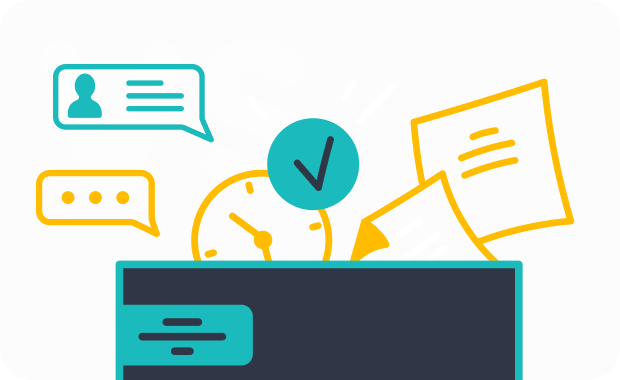
Capture and Organize
You start building knowledge for customer service by capturing information from every interaction and resource. Focus on what your customers need most. Make sure information is easy to find and use. Group content into clear categories and link related topics. Use a technology plan that lets your team access knowledge across devices and formats. Write content that is short, clear, and includes helpful visuals. Tag and organize knowledge so agents can retrieve it quickly during customer conversations.
Sobot’s Ticketing System helps you capture and organize knowledge from multiple channels like email, chat, and voice. The system automatically sorts and assigns tickets, making it easy to track issues and store solutions. You can personalize content for different customer habits, which improves service quality. OPPO, a global smart device brand, used Sobot’s solutions to optimize its knowledge base. This reduced maintenance work by 90% and helped agents find answers faster.
Tip: When you organize knowledge well, you make it easier for both agents and customers to get the help they need.
Share and Apply
Once you capture and organize knowledge, you need to share it with your team and customers. Use collaborative tools and training to spread information. Sobot’s Omnichannel Solution creates a unified workspace where agents and chatbots can access the same knowledge base. This ensures everyone gives consistent answers, no matter the channel.
- Centralized knowledge management lets you update support content in one place.
- Integration with CRM and business tools keeps data flowing smoothly.
- Intelligent routing sends questions to the right agent.
- Machine learning suggests the best responses based on past cases.
OPPO’s story shows how sharing and applying knowledge boosts efficiency. Their chatbot, powered by Sobot, resolved 83% of customer queries automatically. This freed up agents to handle more complex issues and improved customer satisfaction.
Review and Improve
You must keep your knowledge base up to date. Review content often to match changes in products or services. Add new articles when customers ask new questions. Use feedback from agents and customers to spot gaps or unclear answers. Sobot’s analytics tools help you track which articles work best and where you need to improve.
- Update knowledge regularly to avoid outdated information.
- Use customer data to find areas for improvement.
- Encourage agents to review and suggest changes.
- Track self-service rates and ticket trends to measure success.
Continuous improvement ensures your knowledge management system stays useful and reliable. This helps you deliver better service and keeps your customers coming back.
Customer Service Knowledge Management Systems
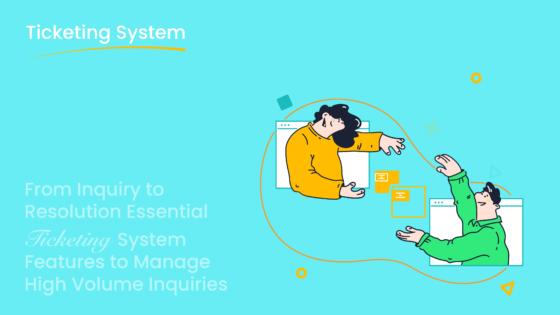
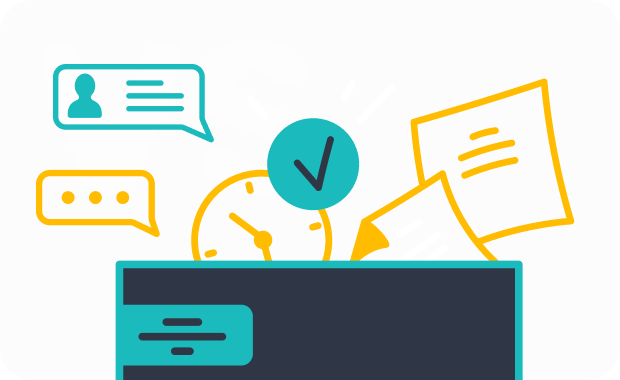
Sobot Ticketing System
You need a knowledge management system that brings all your customer support channels together. The Sobot Ticketing System does this by unifying email, chat, and voice into one platform. This system uses AI-powered chatbots and inbound voicebots to answer questions instantly. You see a direct response rate increase of up to 35% and answer accuracy improves by as much as 15%. Sobot’s AI Agent can extract Q&A pairs from uploaded files, adding them to your knowledge base automatically. This reduces your maintenance workload by up to 90%. The system supports multilingual knowledge bases, so you can serve global customers without extra effort. Sobot’s approach keeps human agents involved, letting AI assist rather than replace them. This balance ensures high-quality support and a personal touch.
| Unique Capability | Description |
|---|---|
| AI-powered chatbot and voicebot | Instantly answers questions, reducing transfers to agents |
| Autonomous Q&A extraction | AI adds new Q&A pairs to the knowledge base, lowering management costs |
| Multilingual knowledge base | One knowledge base serves all languages |
| Human-agent collaboration | AI supports agents, maintaining a human touch |
Omnichannel Solutions
Omnichannel solutions help you deliver seamless customer support across every channel. Sobot’s Omnichannel Solution gives your team a unified workspace, so agents access the same knowledge no matter where the question comes from. This approach improves first contact resolution and reduces average resolution time. Customers get consistent answers, which boosts satisfaction and loyalty. You can track which channels customers use most and adjust your resources to meet demand. Sobot’s system supports integration with tools like Salesforce and Shopify, making knowledge management even more effective.
| KPI Name | Description | How It Supports Knowledge Management |
|---|---|---|
| First Contact Resolution | Issues solved in the first interaction | Faster, more accurate responses |
| Average Resolution Time | Time to resolve an issue | Coordinated support with unified knowledge |
| Customer Satisfaction | Ratings after support | Consistent, effective knowledge delivery |
| Channel Volume & Usage | Tracks channel preferences | Optimizes resource allocation |
AI and Automation
Artificial intelligence transforms knowledge management systems by automating many tasks. AI scans and organizes large amounts of knowledge, making it easy for agents and customers to find answers. Machine learning identifies which articles help most and suggests improvements. Generative AI creates new help content or summaries instantly. AI-powered chatbots provide self-service options 24/7, answering common questions and freeing up agents for complex cases. Intelligent routing sends each inquiry to the best agent. Predictive analytics help you anticipate customer needs and automate follow-ups. These features make your comprehensive knowledge management system dynamic and efficient, reducing response times and improving accuracy.
Tip: Use AI-driven knowledge management to keep your support team focused on what matters most—helping customers.
Benefits for Customer Service Teams and Customers
Faster Resolution
You want your customer service teams to solve problems quickly. A strong knowledge management system helps you do this by giving everyone fast access to the right information. When your team spends less time searching for answers, they help customers faster. The table below shows how much time you save with a knowledge management system:
| Metric Description | Without KM System | With KM System / Impact |
|---|---|---|
| Average weekly hours spent searching for information | 8.5 hours | 4.6 hours (3.9 hours saved) |
| Time to locate documents | 38 minutes | Under 15 minutes |
| Onboarding time saved | N/A | 4.7 hours |
| Increase in onboarding productivity | N/A | 11.7% weekly increase |
You see that customer service teams can answer questions faster and reduce wait times for customers. This improved efficiency means your team can handle more requests and deliver better customer experiences.
Consistency
You want every customer to get the same accurate answer, no matter which channel they use. Knowledge management ensures that customer service teams share one source of truth. This means customers get reliable information whether they contact you by phone, email, chat, or self-service. Here is how knowledge management supports consistency:
- Deliver the same data across all channels so customers never repeat themselves.
- Optimize content for different devices so everyone can access it.
- Let agents move between channels without losing information.
- Support customer preferences by making knowledge available everywhere.
- Centralize information so all customer service teams, chatbots, and self-service tools use the same up-to-date answers.
This approach builds trust and makes the customer journey smooth and simple.
Enhanced Satisfaction
When your customer service teams use a knowledge management system, customers feel heard and valued. You give them quick, accurate, and personal support. Research shows that knowledge management reduces response times by up to 35% and helps agents avoid errors. Customers enjoy consistent service and get answers faster, which leads to enhanced customer satisfaction and stronger relationships. For example, 95% of customers say they will stay with a company when they are very satisfied with the service. You also see higher retention and loyalty because customers know they can count on your team for help. By empowering your customer service teams, you create positive experiences that keep customers coming back.
Challenges and Best Practices
Common Obstacles
You may face several obstacles when you try to build an effective knowledge management system for customer service. These challenges can slow down your progress and affect your team’s performance. Here is a table that shows the most common obstacles and ways to overcome them:
| Obstacle | Description | Strategies to Overcome |
|---|---|---|
| Resistance to Change | People may not want to use new systems or share knowledge. | Show the benefits, involve everyone, offer training, and celebrate wins. |
| Siloed Information | Teams keep information to themselves, making it hard to share. | Build cross-team groups, use shared tools, and encourage open sharing. |
| Capturing Tacit Knowledge | Some knowledge is hard to write down or share. | Use stories, mentoring, and group discussions to share this knowledge. |
| Inadequate Technology | Old or weak tools make knowledge sharing difficult. | Invest in modern, scalable platforms with strong search and AI features. |
| Information Overload | Too much or messy information can confuse your team. | Organize and update content, use categories, and improve search functions. |
| Lack of Engagement | Team members may not want to share or use knowledge. | Lead by example, reward sharing, and make it easy to contribute. |
Tip: When you address these obstacles early, you set the stage for better knowledge sharing and higher retention.
Overcoming Challenges
You can overcome these challenges by following proven strategies. Start by creating a centralized knowledge base so your team always finds the right answers. Standardize training to make sure everyone uses the same approach. Use CRM tools to track customer needs and personalize support. Offer omnichannel support so customers get help on any platform.
- Use unified platforms like Sobot’s Ticketing System to break down silos and centralize information.
- Deploy AI-powered automation to handle routine questions, which reduces agent workload.
- Encourage collaboration across teams by removing barriers to sharing.
- Use real-time collaboration and intelligent routing to connect agents with experts quickly.
Sobot helped OPPO overcome high workloads and integration issues by combining chatbots and human agents. This approach improved efficiency and increased customer satisfaction.
Implementation Tips
To make your knowledge management system successful, follow these best practices:
- Foster a culture where sharing knowledge is valued and rewarded.
- Assign a dedicated owner to manage content quality and regular audits.
- Choose user-friendly platforms with strong search features, like Sobot’s solutions.
- Keep your content fresh by updating and removing outdated information.
- Use AI-powered search and chatbots to speed up service and improve availability.
- Collect feedback from users to find and close knowledge gaps.
- Promote easy-to-read formats, such as short guides and FAQs, to help your team learn quickly.
Note: When you follow these steps, you build an effective knowledge management system that boosts retention and customer satisfaction.
Steps to Get Started
Assess Needs
You begin your customer service knowledge management journey by understanding your current situation. Review how your team shares, documents, and updates information. Interview staff, observe workflows, and use surveys to see how knowledge moves through your organization. Look for problems like hard-to-find answers, outdated guides, or disconnected tools. Map out your priorities and decide which issues impact your team the most. Check if your knowledge base platform supports centralization and easy searching. Identify gaps in people, processes, and technology. Use best practices like Knowledge-Centered Service (KCS) to keep improving your system.
Here’s a simple roadmap to assess your needs:
- Review current processes and documentation.
- Interview team members and observe workflows.
- Identify problems with findability and accuracy.
- Evaluate your knowledge base platform.
- Rank priorities and map needed investments.
- Identify gaps in people, process, and technology.
Tip: A thorough assessment helps you build a customer service knowledge management system that fits your business goals.
Choose Solutions
After you know your needs, you select the right customer service knowledge management solutions. Look for tools that offer intelligent search, easy integration, and strong personalization. Make sure the system can grow with your business and handle large volumes of content. Choose platforms that support multi-language and multi-region needs. Check if the solution provides customizable dashboards and KPIs for tracking success.
| Criterion | Why It Matters |
|---|---|
| Intelligent Search | Helps users find answers quickly, even with unclear questions |
| Personalization & Permissions | Delivers relevant content and controls access for different user groups |
| Extensibility & Integrations | Connects with CRM, chatbots, and other tools for a unified experience |
| Scalability & Availability | Supports growth, multi-language, and after-hours access |
| Accessibility & Ease of Use | Encourages adoption with simple interfaces and minimal training |
| Reporting | Tracks effectiveness and drives improvement |
Note: Sobot’s Ticketing System and Omnichannel Solution meet these criteria, making them strong choices for customer service knowledge management.
Train Teams
You prepare your team to use the new customer service knowledge management system with effective training. Offer workshops, seminars, and e-learning modules. Encourage peer-to-peer learning and collaboration. Use feedback from customers and managers to guide skill improvement. Set clear goals and review performance regularly. Support professional development with resources and flexible schedules. Use a centralized knowledge base for onboarding and ongoing training. Include role-playing and scenario-based exercises to build communication and problem-solving skills. Personalize training formats to fit different learning styles.
Effective training methods include:
- Ongoing workshops and e-learning modules.
- Peer-to-peer learning and collaboration.
- Regular feedback and performance reviews.
- Support for professional development.
- Centralized knowledge base for onboarding.
- Role-playing and scenario-based exercises.
- Personalized training formats.
Block Quote: Well-trained teams use customer service knowledge management systems to deliver faster, more accurate support and improve customer satisfaction.
Customer service knowledge management shapes business success by helping you deliver fast, accurate support to customers at every stage. When you use unified solutions like Sobot’s Ticketing System and Omnichannel platform, you reduce costs, boost agent efficiency, and handle more customers with ease. Quick issue resolution increases customer satisfaction by up to 50%. Sobot’s platform lets you centralize knowledge, automate responses, and personalize service for customers across all channels.
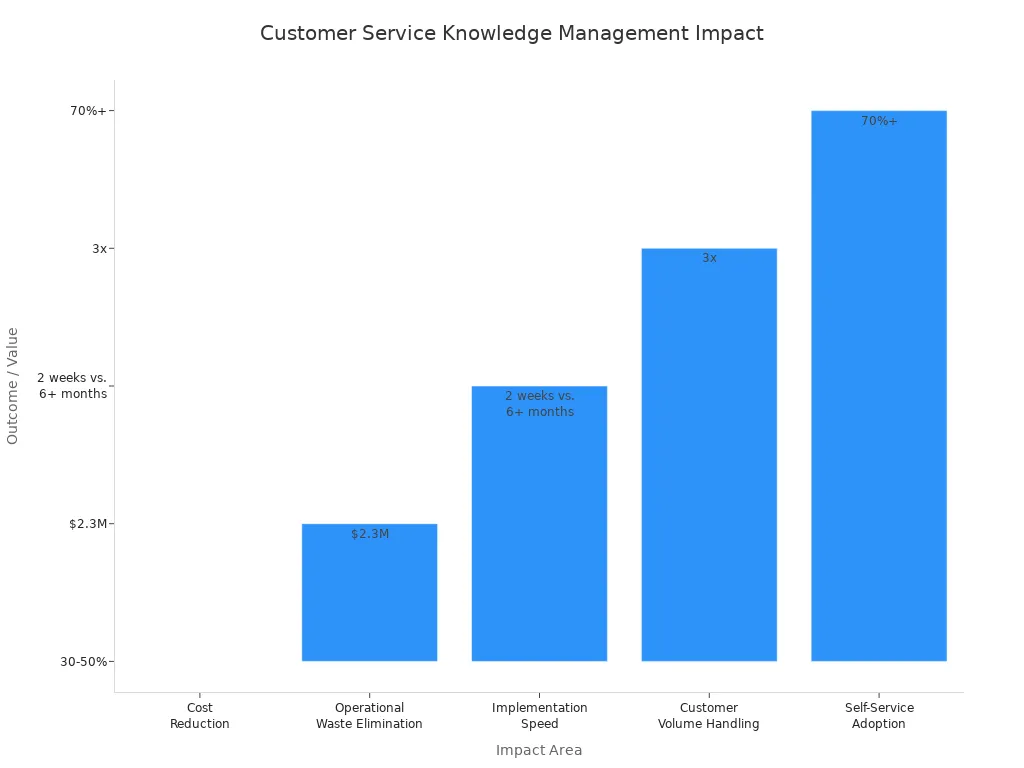
Start by aligning your teams, centralizing knowledge, and choosing the right tools. Explore Sobot’s solutions to give your customers the best experience possible.
FAQ
What is customer service knowledge management?
Customer service knowledge management means you collect, organize, and share helpful information for your support team and customers. You use it to answer questions faster and give everyone the same correct information. This system helps you improve service quality and customer satisfaction.
How does customer service knowledge management help my business?
You save time and money with customer service knowledge management. Your team finds answers quickly, so customers get help faster. You also reduce training time for new agents. Studies show that strong knowledge management can boost customer satisfaction by up to 35%.
What tools do I need for customer service knowledge management?
You need a centralized knowledge base, ticketing system, and omnichannel support tools. These tools help you store, update, and share information across all channels. Sobot’s Ticketing System and Omnichannel Solution make customer service knowledge management easy and effective.
How often should I update my knowledge base?
You should review and update your knowledge base regularly. Add new answers when customers ask new questions. Remove outdated information. Regular updates keep your customer service knowledge management system accurate and useful for both agents and customers.
Can AI improve customer service knowledge management?
Yes! AI can organize information, suggest answers, and automate routine tasks. With AI, your customer service knowledge management system becomes faster and smarter. For example, Sobot’s AI can extract Q&A pairs and update your knowledge base automatically.
See Also
Effective Strategies For Managing Quality In Call Centers
Comprehensive Overview Of Quality Management Systems In Call Centers
Top Ten Ways To Improve Customer Satisfaction Through Live Chat
How To Excel At Providing Customer Support Via Live Chat
Ten Essential Tips For Selecting Social Media Service Software
